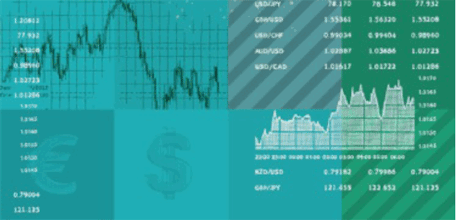6 Ways to Generate Income Using Options – Maybe you’ve heard people say that 90% of traders lose money.
Well, I have some bad news for you… It’s true! However, I have some good news too. I have trained lots of traders to generate consistent income using options. And I can train you too. I’m Dan Passarelli, founder of Market Taker Mentoring, Inc. I spent years trading on the CBOE trading Lloor grinding out consistent
proLits day after day, week after week and month after month. In this eBook, I’m going to show you 6 ways YOU can generate income with options. The 6 Ways to Generate Consistent Income Using Options .The term “income” means something speciLic in options lingo that is different than the common context of the word. “In‐come” option strategies are option strategies that are high‐probability trades, which beneLit from time passing.
As time passes,options slowly lose value, all other price in Lluences held constant. This phenomenon is called “time decay”. Taking advantage of time decay is at the heart of income strategies. The market is always changing, so just knowing one such in‐come trading technique is not going to work if you want to be successful in the long run. There are lots of different income strategies; but these 6 strategies are the simplest and most common…
1. Covered Call
A covered call is a simple “stock overlay” investment strategy. An investor who owns a stock—usually as part of a long‐term investment strategy—sells (short) an out‐of‐the‐money call. This call has a strike price above the current stock price and has no intrinsic value—only time value. That is important be‐cause an option’s time value is 100% subject to time decay. Again, time decay is what makes all these income strategies work and favor the trader.
Imagine you own 100 shares of Yahoo! (YHOO)*, which is trad‐ing around $33. You think the stock will remain fairly stable over the next several weeks—not rising much and not falling much.
Question: How are you supposed to make money holding this stock?
A covered call could be the answer. A trader can establish a covered call by selling a call with an out‐of‐the‐money strike price, say the May 36 call for $1.
!
Now, imagine the trader holds the call until the expiration date (5 weeks away in this example). In this scenario, as long as the stock doesn’t rise above $36 a share (around 9%) the call ex‐pires and the $1 remains the trader’s to keep. That means the trader makes $1 just for holding the stock. This trader might make or lose some on
the stock rising or falling, but the $1 op‐tion premium is a proLit. As long as the stock doesn’t fall more than $1, the trade is a winner. If it falls more than $1, the trade is a loser, but it loses $1 less than it would have without the call. If the stock rises above the $36 strike, the call gets asigned and the stock is sold at $36
also a winning trade.
2. Call Credit Spread
The call credit spread is similar to the covered call in some ways. The difference is that there is no stock involved—only options. And in addition to the short call, the trader buys a higher‐ strike call to create
a “spread”.
For example, imagine Facebook (FB) is trading around $56. A trader thinks it won’t rise above $65 a share over the next month. So, the trader sells a May 65‐70 call credit spread for $0.90. That means, the trader sells the May 65 calls and buys the May 70 calls. Like the covered call, if the trader is still hold‐
ing the option position at expiration and the stock is below the short‐call’s strike price the options expire and the
trader keeps the entire option premium. That would be a $0.90 proLit—or, $90 of actual cash for a 1‐lot spread.
If FB stock falls, even signiLicantly, the trade is a winner, as the options will still expire and the trader has no long stock to worry about. Only if the stock rises above the $65 strike price can the trade start to potentially lose. That would require a 16% rise in a 5‐week period. For this reason, credit spreads are high‐
probability trades. Here, if the stock falls, the trade is a winner; stock stays stable, trade’s a winner; stock rises up to 16%, it’s a winner. Only if the stock makes a very large move to the upside, can the trader lose.
3. Put Credit Spread
The put credit spread is the close cousin to the call credit spread. Here, a trader sells an out‐of‐the‐money put (with a strike price lower than the current stock price) and buys a low‐er‐strike put in the same expiration
month.
Here, imagine GM is trading around $34. But in this case, the trader thinks the stock won’t fall much. So the trader sells the May 30‐32 put credit spread for $0.30. So, here the trader sells the May 32 puts and buys the 30 puts. Similar to the last two examples, as long as the options remain out‐of‐the‐money until
expiration, the option premium ends up as all proLit. But, here that requires the stock to not fall below $32. It can rise. It can stay steady. It can fall as much as $2. Again, a high‐probability trade, as many outcomes lead to proLit. The only outcome that leads to loss is the stock making an exaggerated move to he downside.
To read More,Please download the book.
By: Dan Passarelli!
Categories :
Tags : 90% of traders CBOE trading Income Using Options investment strategy Make Money stock stock price trades





